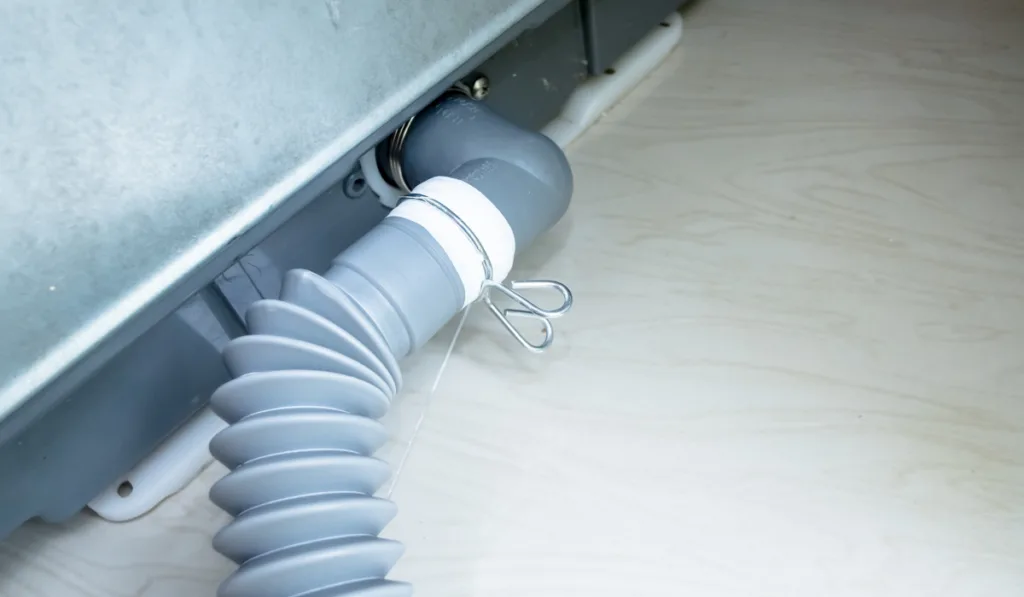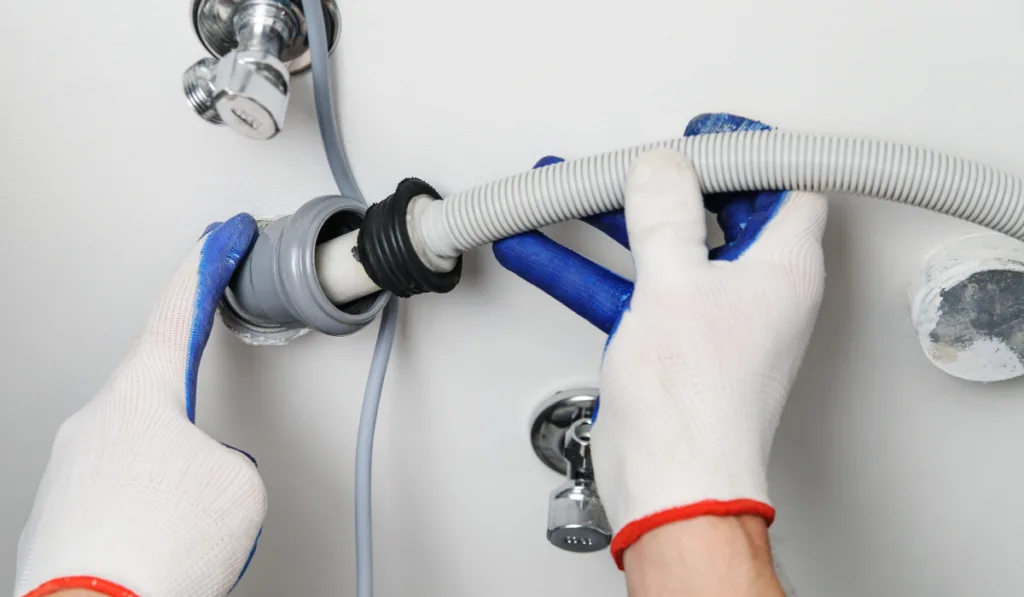*This post may have affiliate links, which means I may receive commissions if you choose to purchase through links I provide (at no extra cost to you). As an Amazon Associate, I earn from qualifying purchases. Please read my disclaimer for additional details.
Does your weekend honey-do list include installing the new washing machine? If so, are you certain you have all the parts you need, especially those that aren’t included with the washer? You’ll need water supply hoses and a way to vent the drain pipe.
Wait a minute, does a washing machine drain need a vent?
Yes, washing machine drains need to be vented to prevent foul odors and prevent hazardous fumes from building up.
In most places, vented washing machine drains are part of local codes. They’re a good idea even when they’re not mandated.

Depending on the fit of the pipe going into the drain, it could cause a vacuum that affects your appliance performance.
Under the right circumstances, the vacuum effect can also impact how well water drains in bathtubs, sinks, and dishwashers around your house.
In homes where there is enough room between the drain tube and where it goes into the drain, you may not need a vent because there is space for air to get out.
Still, venting a washing machine properly is vital to keeping things smelling fresh and working the way you expect.
Here’s some useful information on venting washing machine drains and what you should do.

Table of Contents
Attaching Your Washing Machine to a Venting Standpipe
Looking at almost every home, you’ll see several small pipes sticking through the roof. These are venting standpipes that allow for the flow of sewer and other gases to escape the house.
Venting standpipes clear out odors and avoid the gathering of any harmful gases in your home.
Typically, sewer pipes, washing machines, and other home systems tie into standpipes depending on where they’re located in the house.
Ideally, you’ll have a venting standpipe close to where your washing machine is.
However, everyone’s house is different, so it may be more of a challenge for some people than others.
A good vent lets your washing machine p-trap do what it’s designed to do. The p-trap keeps water flowing without letting sewer gases leak into your house through your sinks and other drains.
Guarantee Good Washing Machine Performance
What happens if your washing machine drain is not vented?
Your washing machine and other plumbing fixtures will make unwanted noises without proper ventilation.
You’ll likely hear gurgling from your pipes and drains, which will cause worry.
Lack of a vent or poor ventilation may also cause performance issues. Vents let air escape so the water can move swiftly through pipes and drains.
Do Washing Machines Come with a Vent Hose?
Unlike dryers, which don’t usually come with vent hoses, washing machines typically come stocked with plastic vent hoses that attach to pipes and your drain system.
Whether you’re buying a Maytag, GE, LG, Whirlpool, or Samsung washing machine, odds are you’ll get a decent-sized venting hose that will be long enough to attach to the venting standpipe.
If you need a longer hose, you can always buy one at your local home improvement store or online.
They’re affordable, and many people opt to buy stainless steel braided pipes because they’ll last longer and they’re generally safer.
When buying a new washing machine, check to see what components the appliance ships with to ensure you’ll have everything you need for fast installation when it arrives.

DIY Venting vs. Hiring a Professional
When in doubt, ask a plumber to help install your washing machine to guarantee it’s properly attached to the drain and connected to the vent.
Your peace of mind will be worth whatever it costs.
If, however, you feel confident in your ability to install the new appliance, there are plenty of YouTube tutorials that will walk you through things every step of the way.
When installing a new vent where it’s not required under code, you may have more difficulty getting your washing machine hooked up to your ventilation stack.
In those cases, you will likely want to talk to a plumber in case any new pipes are required, or you have to cut through any drywall to get to a connection.
Conclusion
A washing machine drain does need a vent. You don’t want fumes, odors, or loud noises causing problems.
Luckily, most machines come with the proper hoses, and you can hire a professional to install it for you if you aren’t the DIY type.
